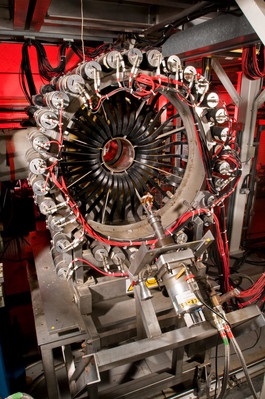
Chiral superconductors are novel examples of topological superconductors with finite angular momentum Cooper pairs circulating around a unique chiral axis, thus spontaneously breaking time-reversal symmetry. These materials are scarce and usually feature triplet pairing. The technique of muon spin relaxation has been used to study to pnictide compound LaPt
3P, unambiguously establishing that the superconducting ground state of LaPt
3P is chiral d-wave singlet.
Superconductors are an important class of material that, when cooled below a certain temperature, lose all electrical resistance giving them a wealth of potential applications. They have been the subject of intense scrutiny since they were first synthesised in 1911. The idea of a material able to conduct electricity with close to 100% efficiency makes them not just fascinating but highly desirable, especially in a society needing to reduce its energy consumption.
However, whilst conventional superconductors have been proven to have some important uses such as the MRI scanners, their wider application has been limited by the critical temperatures required and the expensive liquid helium needed to cool them sufficiently. There is, therefore, a global scientific effort to better understand unconventional, or high-temperature, superconductors which aren’t so restricted.
In conventional superconductors such as the elemental metals, Cooper pairs form as a result of electrons binding as a result of phonon-mediated attractive interactions. They have a nonzero onsite pairing amplitude in real-space, in contrast with unconventional superconductors, which are defined as having zero average onsite pairing amplitude in real-space.
Chiral superconductors belong to a special class of unconventional superconductors, having non-trivial topology and Cooper pairs with finite angular momentum, and usually feature triplet pairing. These materials pose a pivotal challenge in resolving how superconductivity emerges from a complex normal state. They usually require a long-range interaction and have lower symmetry Cooper pairs. Chiral superconductors are rare examples of topological superconductors, however, chiral triplet superconductors are topologically fragile, with gapless Majorana boundary modes that are only weakly protected against symmetry-preserving perturbations compared to chiral singlets.
LaPt3P is a member of the platinum pnictide family. Indications of the unconventional nature of superconductivity in LaPt3P came from the experimental results: very low Tc, unsaturated resistivity up to room temperature and a weak specific heat jump at Tc. LaPt3P also has a different electronic structure from the other two members of the pnictide family as La contributes an extra valence electron.
The group of researchers used muon spin relaxation to perform a comprehensive analysis of the superconducting properties of LaPt3P. Two sets of polycrystalline LaPt3P specimens were synthesized at two different laboratories by completely different methods. MuSR measurements were then carried out at two different muon facilities, the MuSR spectrometer at ISIS and the LTF spectrometer at the Paul Scherrer Institut (PSI) in Switzerland. These measurements revealed spontaneous magnetic fields arising just below Tc.
